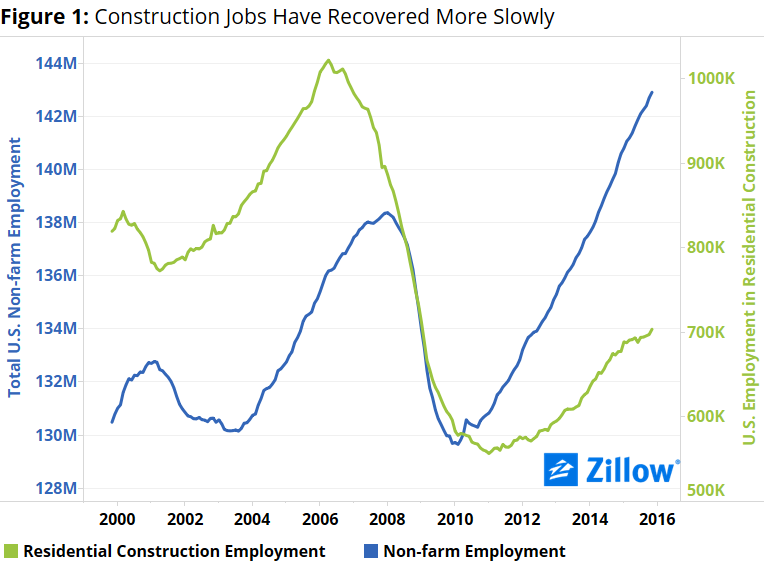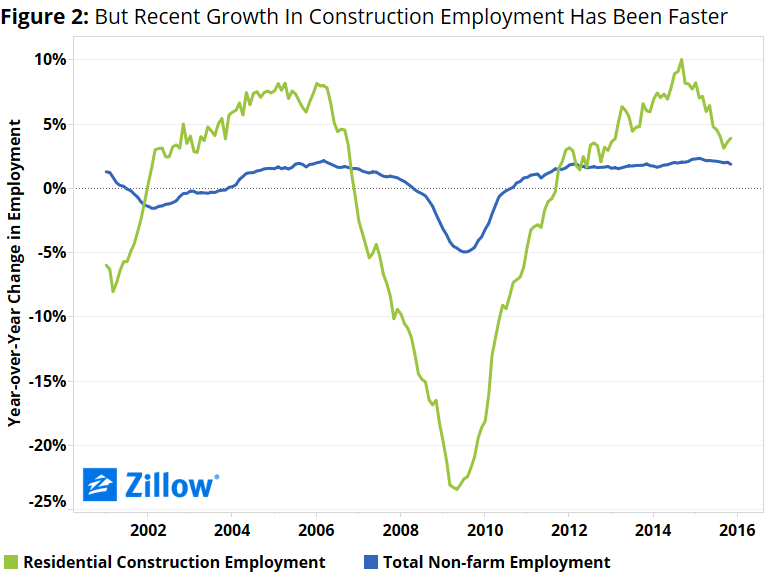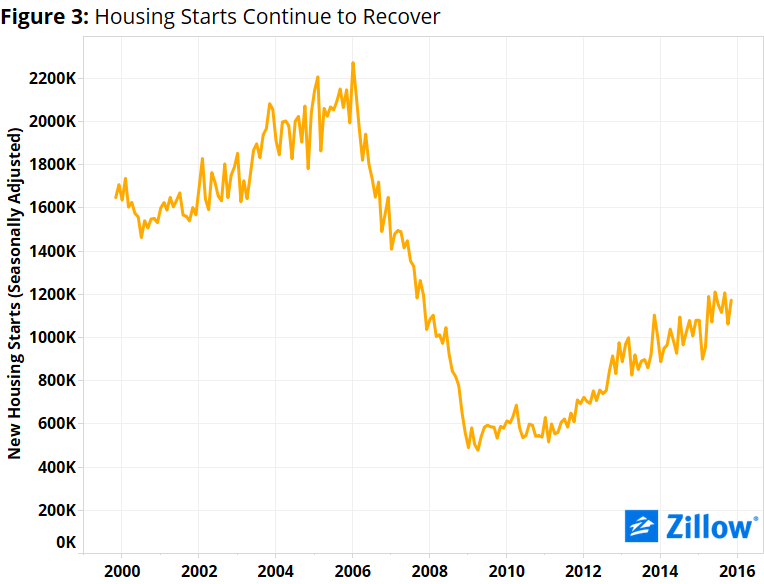Middling, at Best: The Slow Recovery of Residential Construction Jobs
It is neither the best of times nor the worst of times for the residential construction industry. Instead, the industry seems stuck somewhere in the middle, growing sufficiently to put the lean recession years firmly in the rearview, but not enough to declare a full-blown comeback in construction jobs.
- The number of Americans working residential construction jobs rose 5.8 percent year-over-year in 2015, more than twice the pace of annual growth in employment overall.
- But even at that rapid rate, it will likely take the rest of the decade or more for construction employment to return to its pre-crash, 2008 levels.
- Total employment in residential construction remains more than 20 percent below 2008 levels, while overall employment is 3 percent higher over the same time.
It is neither the best of times nor the worst of times for the residential construction industry. Instead, the industry seems stuck somewhere in the middle, growing sufficiently to put the lean recession years firmly in the rearview, but not enough to declare a full-blown comeback in construction jobs.
 The number of Americans working residential construction jobs rose 5.8 percent year-over-year in 2015, more than twice the pace of annual growth in employment overall (figure 1). In December alone, more than 23,000 Americans found jobs building homes and apartments nationwide. But even at those prodigious growth rates, it will likely take the rest of the decade or more for construction employment to return to its pre-crash, 2008 levels.
The number of Americans working residential construction jobs rose 5.8 percent year-over-year in 2015, more than twice the pace of annual growth in employment overall (figure 1). In December alone, more than 23,000 Americans found jobs building homes and apartments nationwide. But even at those prodigious growth rates, it will likely take the rest of the decade or more for construction employment to return to its pre-crash, 2008 levels.
The recovery in construction employment is badly lagging behind the recovery in employment overall. Total employment in residential construction remains more than 20 percent below 2008 levels, while overall employment is 3 percent higher than it was back then (figure 2).
 Given another year of strong growth in home values, consumer confidence (at least in the near term) and new construction starts, the inability of the construction industry to break through and become the job creation engine we’re used to seeing is puzzling and frustrating.
Given another year of strong growth in home values, consumer confidence (at least in the near term) and new construction starts, the inability of the construction industry to break through and become the job creation engine we’re used to seeing is puzzling and frustrating.
But there are at least some glimmers on the horizon that things could soon shift for the better.
Housing starts have continued to climb (figure 3), and permits data suggest there is more to come. A diverse set of large cities – from Boston, New York and Washington, D.C., to Denver and Seattle – set 25-year highs in residential building permit applications last year. Given this tremendous growth and potential energy in the construction market – particularly on the rental side – there are signs the tide could soon turn.
Then again, many of those same signs existed last year, too.




